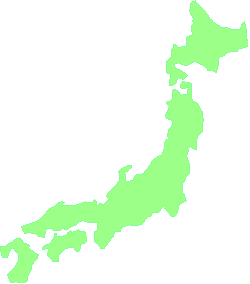
Geography
Japan consists of four main islands: Hokkaido in the north, Kyushu in the south, Honshu, the main, largest island and Shikoku, located between Honshu and Kyushu. Japan extends 3,000 kilometers from north to south, a range equivalent to that from southern British Columbia to the Mexican Baja Peninsula.
The total land area is about 378,000 sq. km., or about the size of California. Japan's present population is about 125 million, making it one of the world's most densely populated countries. Japan's inhabitants by race are 99% Japanese, with minorities of Korean and Chinese. Japan is 84% mountainous and forested, with only 16% of the land area habitable and fertile. Japan is located on the Pacific Ring of Fire, and experiences about 1,500 seismic occurrences per year (mostly tremors). Due to the volcanic environment, there are many hot springs that the Japanese can enjoy
Weather
There are a wide range of climates in Japan, ranging from the freezing conditions of Hokkaido in the north to the tropical weather in the southern islands of Okinawa. In the main area of Japan, the four seasons are evident and similar in time periods to the west coast of North America. There is a rainy season from mid-June to mid-July, although the temperatures are still warm and the humidity rises to very high levels. The typhoon season is in September, but it is the southern islands that are most affected by any typhoons.
